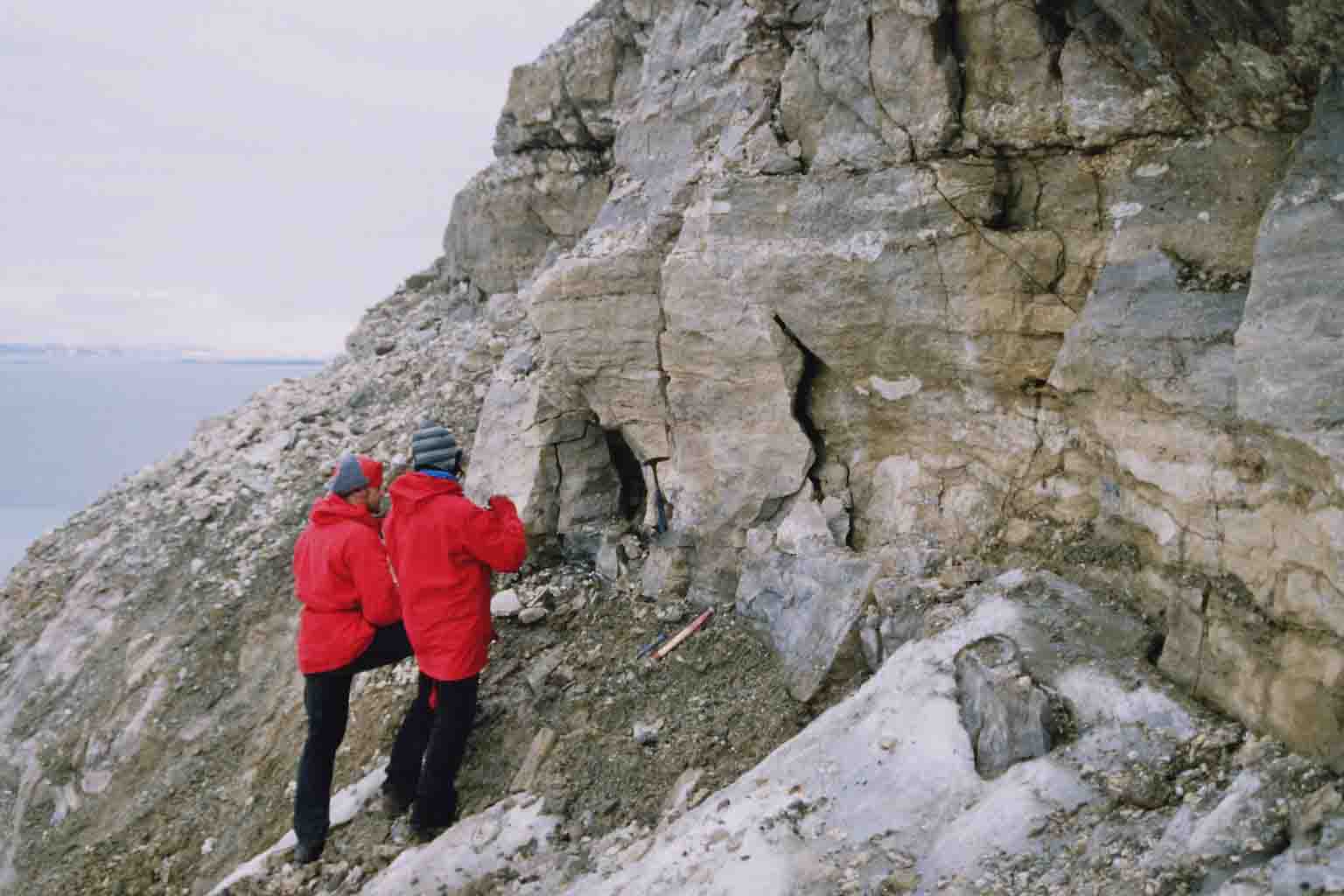|
|
Life in the Arctic: fieldcamp and logistics
Svalbard's physical challenges make geological field work there
possible only with extensive technical assistance. The best time
of year to conduct field work is from the end of July and through
August / beginning of September. During this time, the bays are free of
pack ice, and there is the most snow- and ice-free area on land.
For this reason, field work for this project was conducted during August 2006. The field locations
were chosen for their proximity to well-exposed Carboniferous /
Permian strata. As their is no near-by settlement on NE Spitsbergen, the area of study, a field camp had to be built.
Camp

A) The "materials tent"
where food and supplies are stored. Around the tent are several plastic
barrels: much of the food and supplies were packed in these barrels and
delivered to the site of the camp by ship, one month prior to our
arrival. It is always a risk that polar bears might get into the
unattended supplies, but this time nothing happened.
B) The "kitchen tent",
heated with a small wood stove, equipped with a three-burner gas stove
for cooking, dining table, garbage bin and so on. Practically
all the comforts of home.
C) Three red and
yellow sleeping tents, one for each person. In this photo, only
three people were in the camp. Near the end of the field season,
however, camp numbers went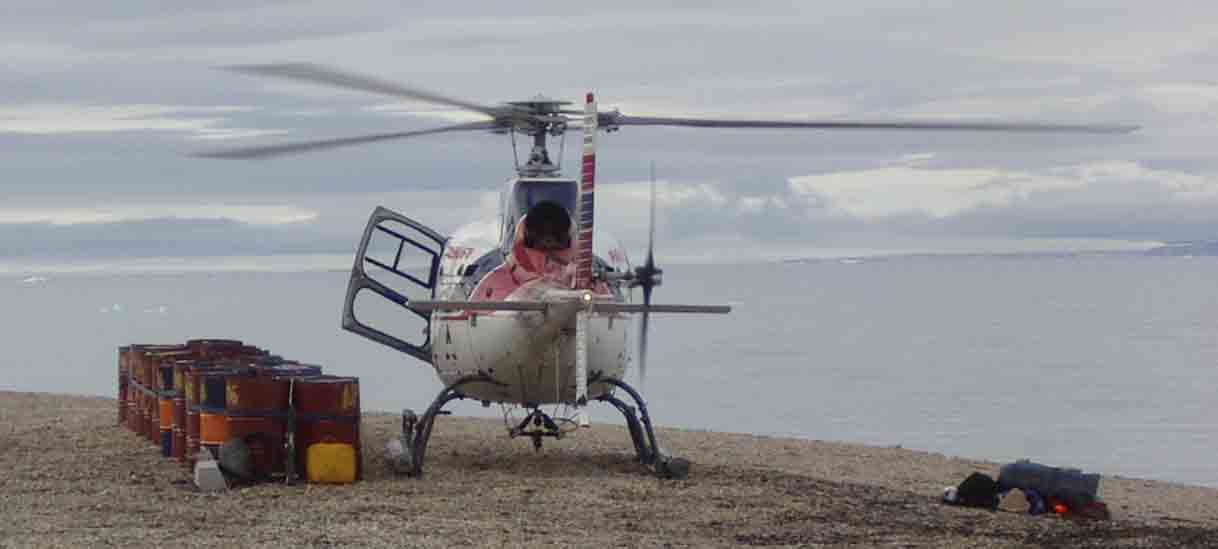 up to 11 people. up to 11 people.
D) The
helicopter "landing pad". Above, the fuel barrels (fuel for at least
two weeks) for the helicopter can be seen. Right, just after landing.
|
|
|
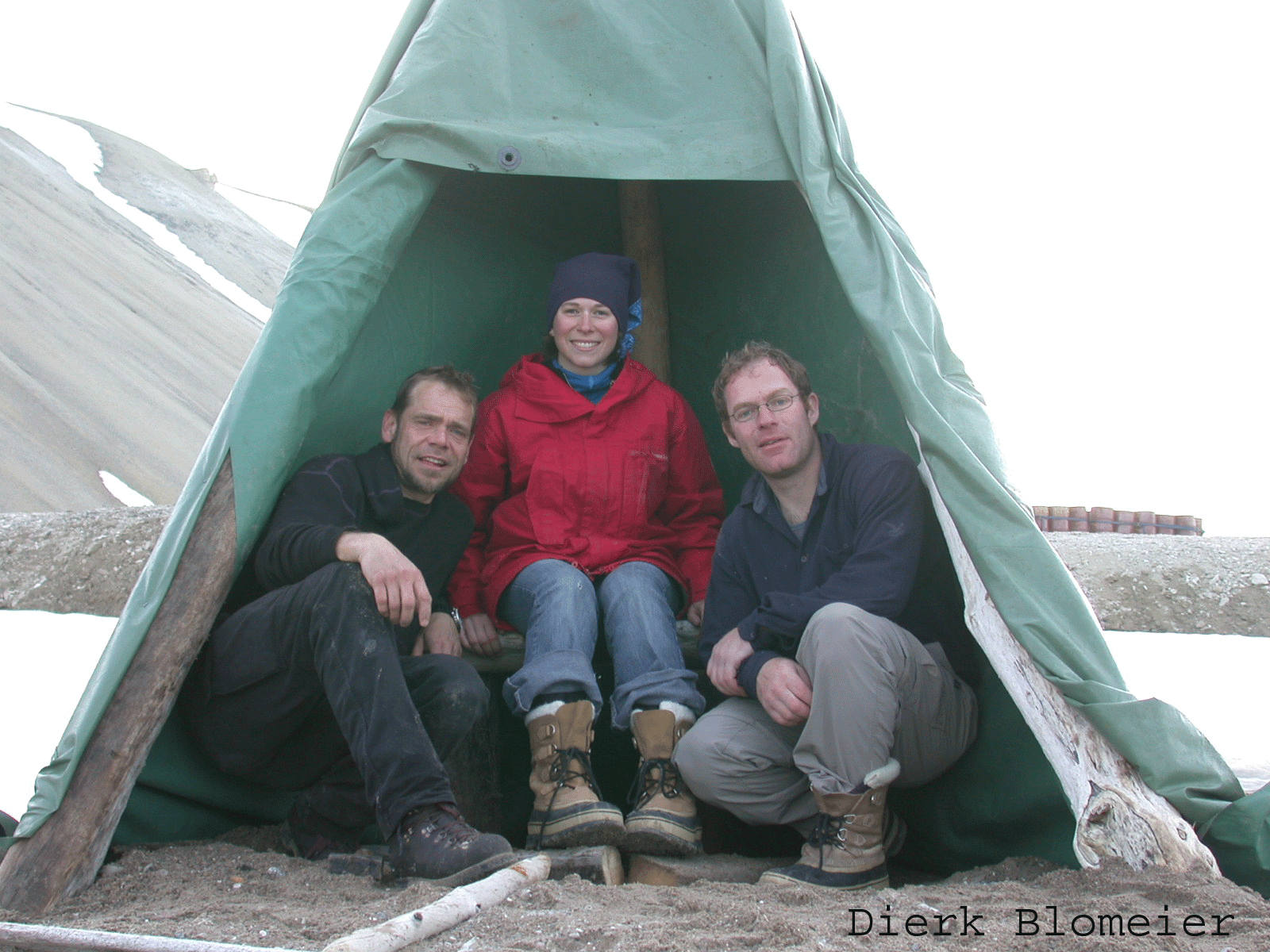 The "toilet tent". A pit dug on the beach, and tarp for privacy and protection against the elements. With excellent views across the bay.
The "toilet tent". A pit dug on the beach, and tarp for privacy and protection against the elements. With excellent views across the bay.
When the field work is done, this must be completely
disassembled, along with everything else, and the site is left behind
as though no one had been there.
Water:
Just outside of the camp was a small clean brook, the source of cooking,
washing and drinking water.
|
|
|
Ten people in the field camp. 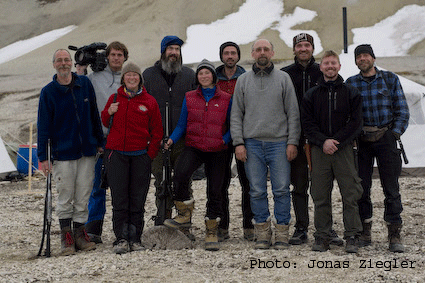
From left to right: Karsten Pipejohn, geologist from BGR,
media producer Michael Trapp,
geologist from NPI Synnove Elvevold,
Scientific Director of NPI,
Master student Anna Dustira,
paleontologist Holger Forke,
project leader from NPI Winfried Dallmann,
helicopter technician,
helicopter pilot,
sedimentologist from NPI Dierk Blomeier
|
|
|
Safety
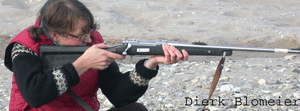 Rifles
are needed for protection against polar bears, and should be kept
near-by at all times. Everyone in the field is instructed on how to
properly use a rifle. Should a polar bear approach the camp at night,
or while no one is around, a trip-wire fence equipped with flares ("Snubbleblus") is erected around the camp. The loud noises and bright lights when it is triggered frighten bears away. Flare guns are also present in the camp, and in the toilet tent. Rifles
are needed for protection against polar bears, and should be kept
near-by at all times. Everyone in the field is instructed on how to
properly use a rifle. Should a polar bear approach the camp at night,
or while no one is around, a trip-wire fence equipped with flares ("Snubbleblus") is erected around the camp. The loud noises and bright lights when it is triggered frighten bears away. Flare guns are also present in the camp, and in the toilet tent.
|
|
|
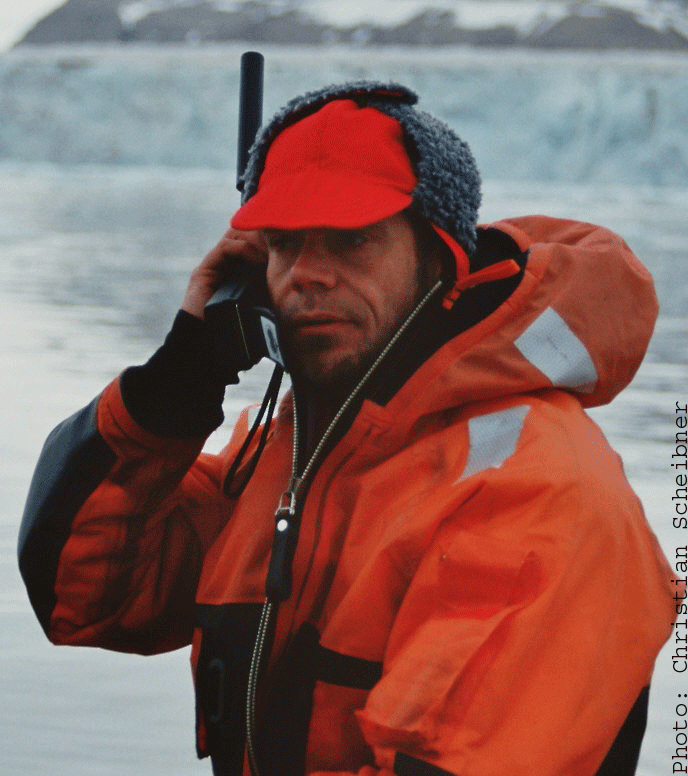
Since there is no mobile phone reception, a satellite telephone (right) serves as means
of daily communication between camps and with town. If there is an
emergency, on land or on water, the satellite phone can be used to call
for help. In the boat, survival suits (right) are worn at all times. These make surviving the 2 degree iceberg-laden waters possible. There is also an emergency beacon kept in the rubber boat at all times.
|
|
|
Funding
This is of course an essential logistical element:
fieldwork is not possible without money to pay for the extensive
supplies, food, transportation, etc. Funding for travel expenses for
the 2006 field season was received from DAAD for travel expenses.
The Norwegian Polar Institute and the BGR paid for food, supplies and
helicopter use.
|
|
